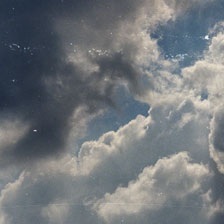Update September 2023: Brooklyn Film Camera now also sells dedicated adapters for Instax Mini and Type 100!
Scan adapters are the unsung heroes of instant film photography. They are a piece of equipment so basic, so essential to the process, that it should come with every single Fuji Instax and Polaroid i-type camera sold. Unfortunately for us, it does not. In fact, after making them for a few brief years, the Impossible Project (aka Polaroid Originals aka Polaroid) discontinued making scan adapters due to a lack of consumer interest.
For years, I’ve been forced to recommend janky work-arounds in my Polaroid scanning guide. Personally, I’ve made do with forcing all my photos in an ill-fitting Spectra (RIP) adapter. All this time, I’ve lamented that all it would take to make a new adapter is somebody with a 3D printer and some basic know-how. Finally, at long last, the good folks at Brooklyn Film Camera and Cameradactyl have heard our cries, and they’ve released a new honest-to-goodness Polaroid scan adapter.
If you scan Polaroids or Fuji Instax images with a flatbed scanner, you need an adapter. This is the only one I know of that is currently sold. You should get it if you want to share digital versions of your Polaroids or create prints.

That little gap between the Polaroid and the glass surface of the scanner is critical to getting great images. If the Polaroid hangs beyond the edge of the adapter, it won’t work.
What Is It?
Why do you need a Polaroid scan adapter? There is plastic layer on the front of a Polaroid image, and when it makes contact with the glass surface of a flatbed scanner, it can cause ‘Newton rings’ – patches that look like little oil slicks. Newton rings absolutely wreck your image and are particularly difficult to remove. They can appear anywhere on the image that the Polaroid makes contact with the flatbed. From personal experience, even if you’re diligent in Photoshop, you can miss patches.

Detail from a photo that fell victim to Newton’s nefarious rings. You may not notice them at first, but they’re all across the lower third of the image. It’s almost impossible to remove the rings without damaging the quality of the photo.
A scan adapter raises the Polaroid off the flatbed scanner surface just enough that the plastic doesn’t make contact with the glass, while keeping it close enough that the image doesn’t become blurry from distance.

Be sure to use plenty of tape to secure your images. It’s important to include support in the middle, as Polaroids tend to bow slightly.
Scan Adapter Build and Quality
Brooklyn Film Camera’s spin on the scan adapter hews closely to the Impossible Project’s old model (so closely that they call it ‘version 2’). There are four slots that accept SX-70/600/i-Type frames. The adapter itself is black so that it contrasts strongly with the (usually, but not always) white frames of the Polaroid. There are holes that help you remove the images when you’re done.
The main difference between this scan adapter and the Impossible Project version is the lack of glue. This is actually a major plus. The Impossible Project’s adapter had a layer of adhesive that worked great at first, but quickly wore out. I ended up having to scrape mine out and shift to using tape. With this adapter, you just use tape from day one. You can use tape balls (make them as teeny-tiny as possible) or double sided tape (recommended) to insert the film.
Tips and Tricks
Something to be careful of is that there is so little margin for error, that if the Polaroid is bent or the tape is loose, gravity will take over, and the plastic will meet the glass of the scanner. Check your scans often, because it is way easier to simply redo a scan right then and there than to discover Newton rings later in the process.
Polaroids tend to bow out in the middle, so make sure to put tape on all four edges, and then at least two pieces in the middle.
If you’re looking for an in-depth guide to how to scan your Polaroid images, check out my instant film scanning guide, which has all the info you need about the process, including software settings.

The adapter comes with some handsome engraving on the back (shown with protective packaging still on).
Where To Get One
Right now, they’re sold directly from Brooklyn Film Camera’s website. They often sell out, so be sure to jump on it if one becomes available. Like a good case for your fragile SLR 680, a good scan adapter is priceless.




You must be logged in to post a comment.